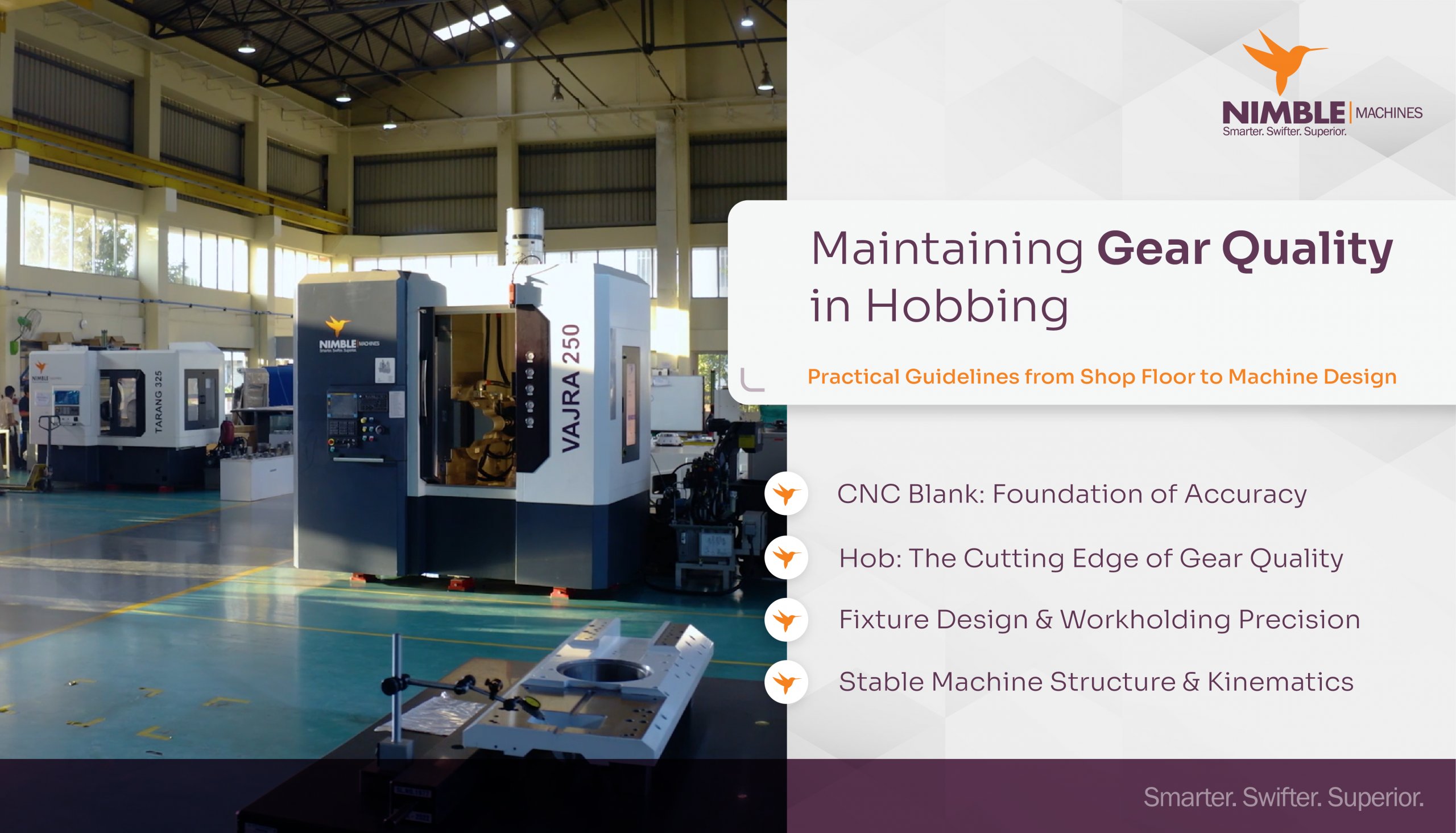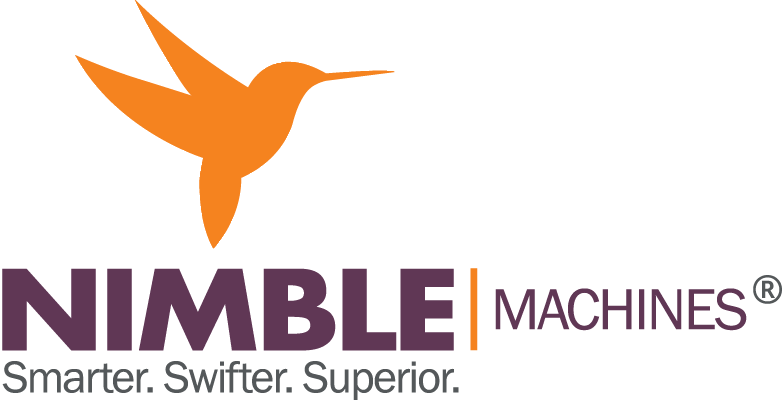Maintaining Gear Quality in Hobbing: Practical Guidelines from Shop Floor to Machine Design


Maintaining Gear Quality in Hobbing: Practical Guidelines from Shop Floor to Machine Design
Consistently achieving high gear quality in Gear Hobbing is the result of deliberate control over multiple interdependent factors—tooling, work holding, machine geometry, and application parameters. At Nimble Machines, we’ve built our VAJRA series CNC gear hobbing machines around these principles, and we extend this philosophy through our application engineering support to every customer.
Here are key areas that directly impact the output quality of gear hobbing operations:
1. CNC Blank: Foundation of Accuracy
The gear blank is the starting point. Any deviation in the blank propagates through the hobbing process, affecting tooth accuracy, profile finish, and hob wear. We recommend the following best practices for blank quality: (DIN 7)
-
Face runout (w.r.t. bore): ≤ 15 µm
-
Face parallelism: ≤ 15 µm
-
Bore accuracy: ≤8 microns
-
Blank hardness: 180–210 BHN
→ Enables proper chip formation and avoids hob glazing. Lower hardness leads to premature blunting.
At Nimble, we review blank specifications during the trial phase and assist customers in identifying prep-stage corrections, if required.
2. Hob: The Cutting Edge of Gear Quality
The hob is the most critical element influencing gear profile accuracy, spacing consistency, and surface finish. Even minor tool inaccuracies or wear get directly reflected in the final gear output. Optimizing hob selection and usage is therefore non-negotiable for quality-focused gear manufacturing.
Hob Accuracy Class:
- Use Class AA or AAA hobs (as per DIN 3968) when targeting DIN 7-DIN 8 gear quality respectively.
Hob Type and Tooth Count Relationship:
- Avoid multi-start hobs when the number of starts is a multiple of the gear teeth, as this can introduce indexing and spacing errors.
Hob Material and Performance:
- For higher cutting speeds, use high speed hobs like Carbide/ES Cut/ Speedcore material hobs.
- These allow safe and efficient cutting speeds of 150–350 m/min, assuming sufficient fixture and machine rigidity.
Hob Runout Control:
- Maintain hob runout within 5 microns on either side to prevent profile distortion and achieve consistent finish quality.
3. Fixture Design and Workholding Precision
Accurate and stable workholding is critical to achieving consistent gear quality. Poor fixture design and improper maintenance can lead to runout, tooth profile error, and lead variation. To eliminate these issues, we ensure:
- Repeatable Quick-Change Systems: Enables fast setup changes with reliable concentricity and positioning.
- Clamping Force Calibration: Clamping torque and tailstock force are set per part configuration and verified during setup and every shift to prevent part slippage.
- Runout and Flatness Validation: Resting face runout, collet wear, and clamping cap parallelism are monitored regularly using CMMs, dial indicators, or master components.
The result: minimal PCD Runout, stable tooth profile, improved PCD accuracy, and repeatable inspection results across shifts.
4. Stable Machine Structure and Kinematics
The machine’s rigidity and motion precision play a critical role in delivering high-quality gears. The VAJRA series machines are engineered with:
- High-Damping Cast Iron Base: Effectively absorbs vibrations and ensures structural stability during cutting.
- Direct Drive Rotary (DDR) Spindle: Provides zero backlash and precise indexing for accurate gear tooth generation.
- Automatic Thermal Compensation: Actively compensates for thermal drift, ensuring consistent dimensional repeatability over long cycles.
This robust mechanical foundation is essential to minimize lead error, profile deviation, and flank inconsistency—delivering consistently high gear quality.
Additionally, all VAJRA machines undergo laser calibration and geometry alignment as per IS 8407 standards to achieve the highest levels of accuracy and repeatability.
Conclusion: Quality Is Engineered, Not Assumed
At Nimble Machines, we believe that quality starts at the design stage—of both the machine and the process. By supporting our customers with the right hobs, fixture designs, process settings, and machine calibration, we ensure that high gear accuracy is not a one-time result, but a repeatable standard.
Be part of our journey in precision engineering—follow us on LinkedIn

